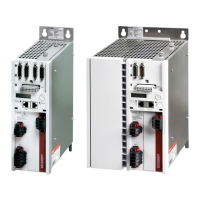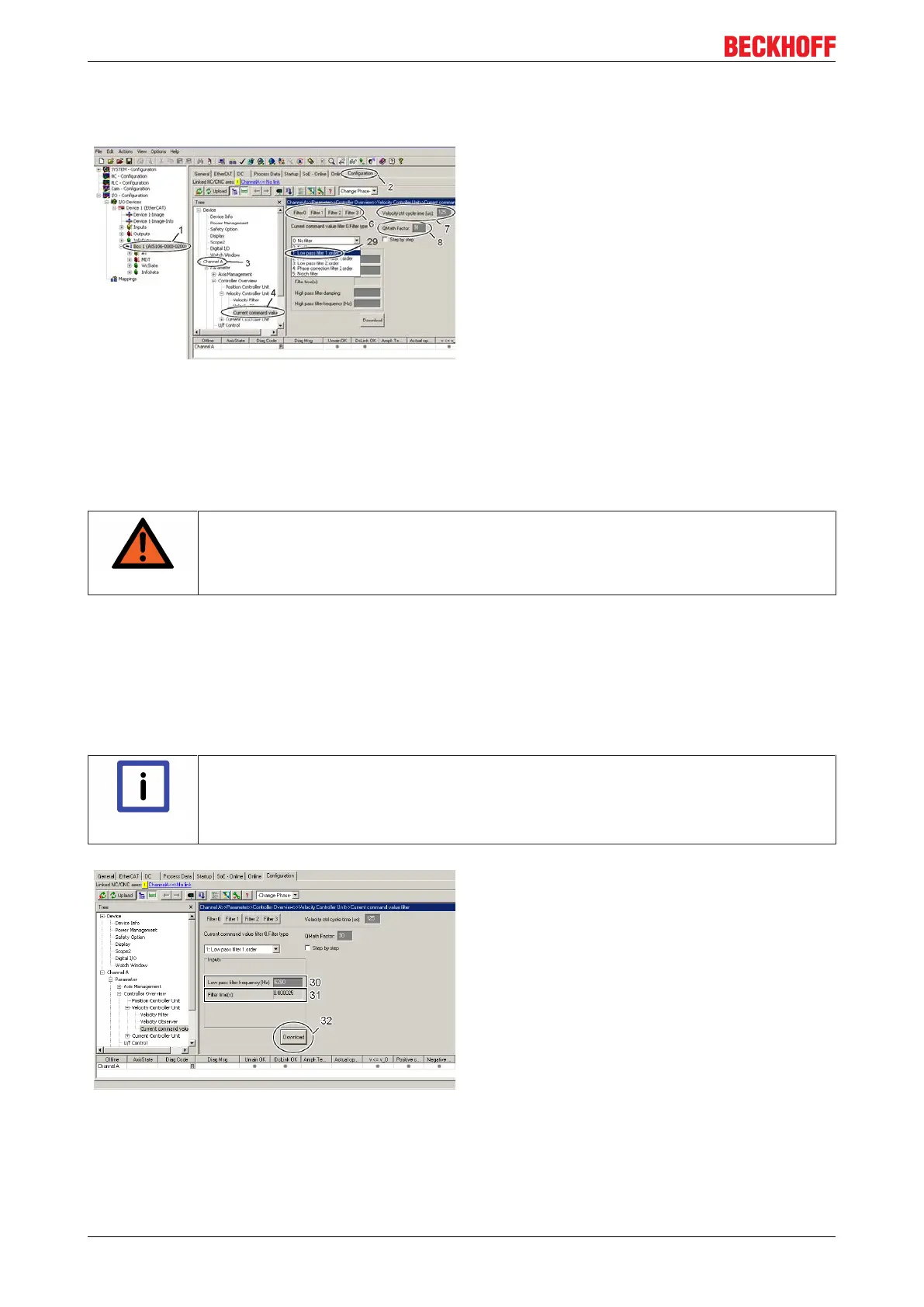Internal velocity filters
Function description40
Version: 1.5
8.4 1st order low pass filter
The 1
st
order low pass filter attenuates all frequencies
above the specified limit frequency. Select a servo
drive (1) in the TwinCAT System Manager, start the
TCDriveManager (2), click on the respective axis (3)
and select the "Current command value filter" (4).
A maximum of four filters are evaluated, which can be
parameterised independently of one another. In area
(6), activate the filter that you would like to occupy
with the low pass filter. The cycle time of the velocity
controller is indicated in field (7). The "QMath
Factor" (8) determines the scaling of the filter input
parameter. With the current filter implementation the
maximum possible resolution is achieved with the
default value "30".
Now select "Low pass filter 1. order" (29) from the
drop down menu.
8.4.1 Parameterisation of the filter
WARNING
Warning, risk of injury from uncontrolled movements!
Impermissible damping values lead to a strong phase shift, which can result in uncontrolled
acceleration of the motor and other instable states.
This filter is parameterised with the parameter "Limit frequency" (30). The time constant (31) is calculated
from the limit frequency according to the following equation
"Time constant [s] = 1 / (2*Pi*Limit frequency [Hz] )".
Determination of the limit frequency
The following test provides information about possibly existing interference frequencies: Drive through the
necessary operating speed range and make a scope recording of the actual active current (IDN S-0-0084). A
frequency analysis shows possibly existing resonance points.
Note
Phase shift
With this filter you have no influence on the damping and any resulting phase shift. If you
are not sure whether a phase shift is permissible, please use the "Phase correction filter 1.
order"
Click on the "Download" button (32) to conclude the
parameterisation. If you are online these parameters
are loaded directly into the AX5000 and activated. If
you are offline they are only written into the start-up
list.

